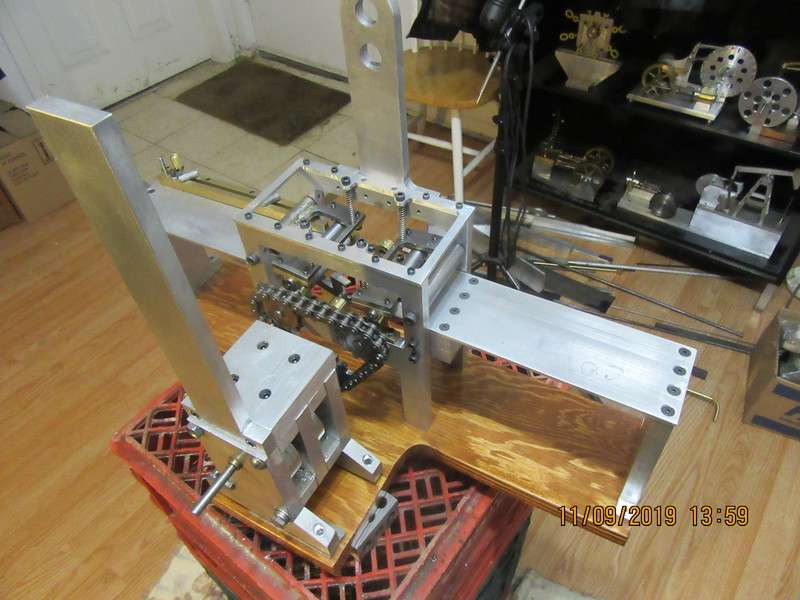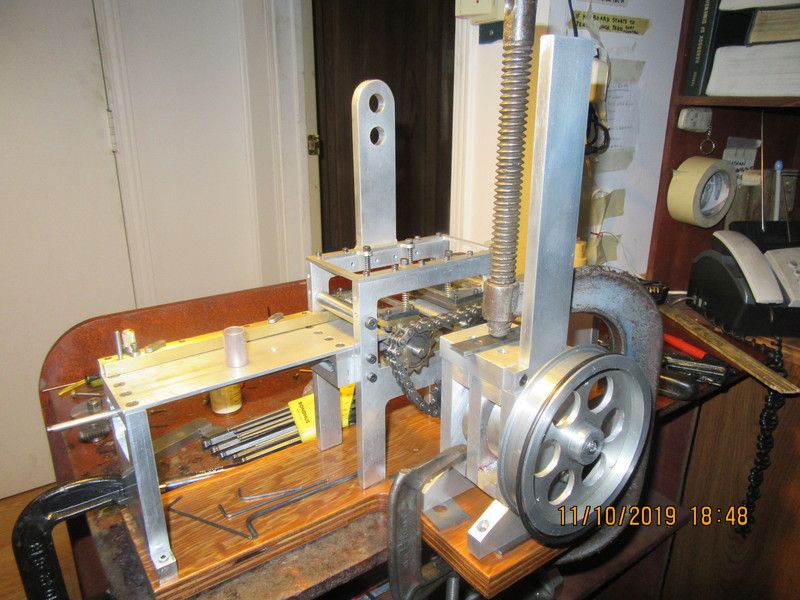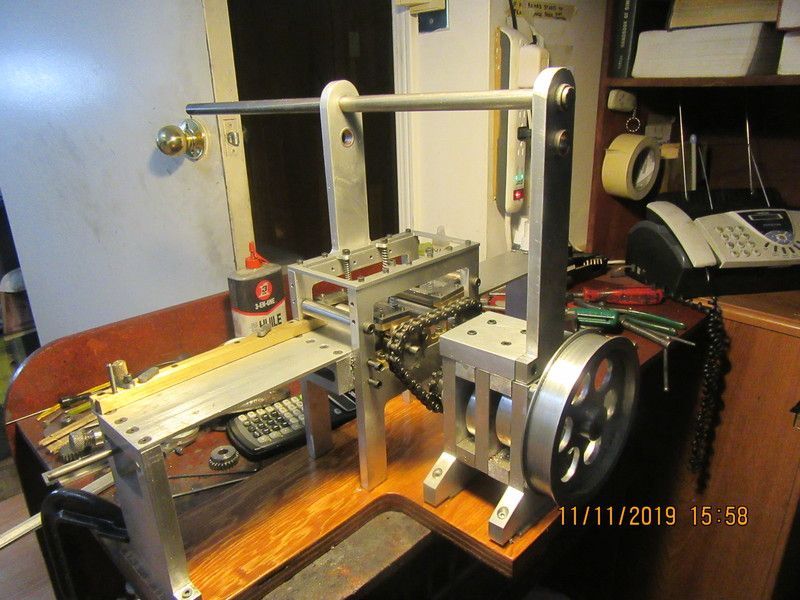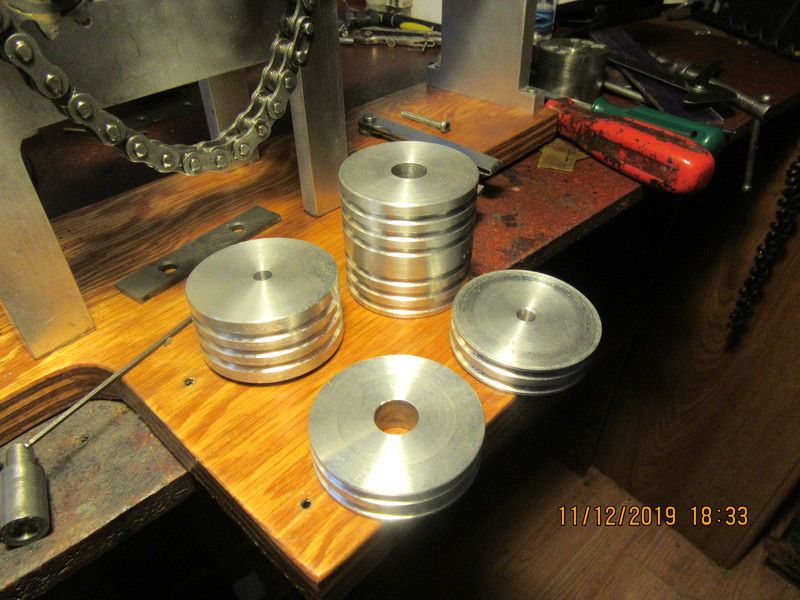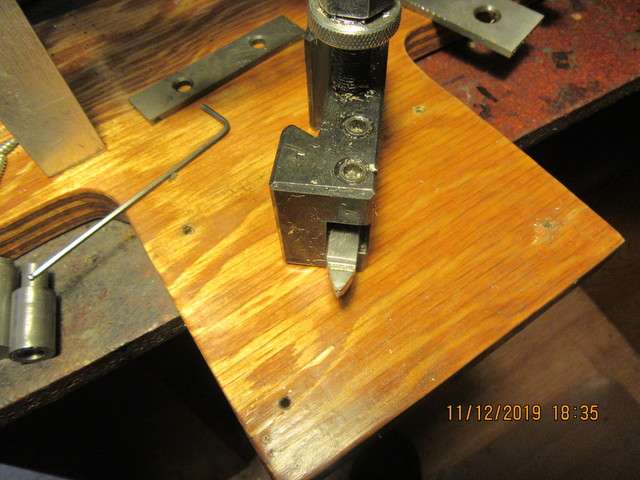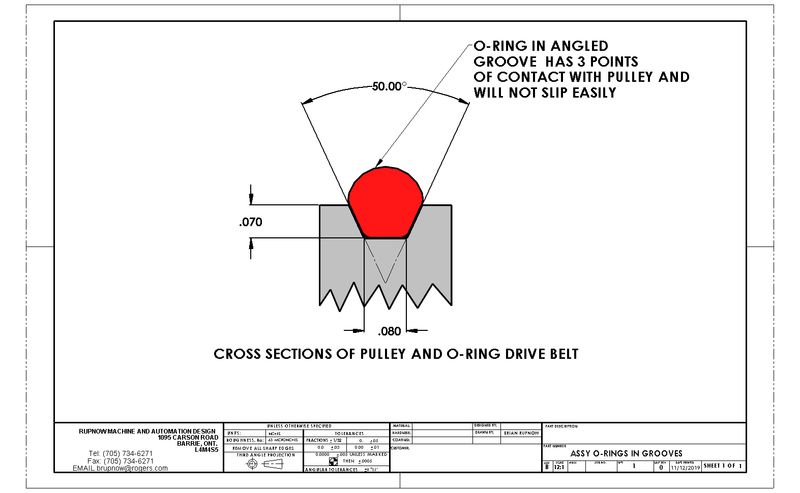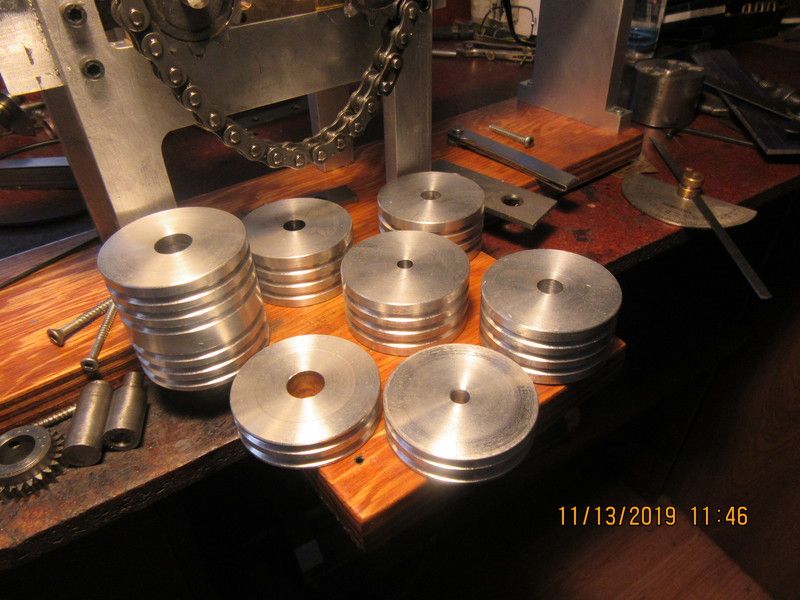I have an issue. The roller chain that connects the reducer output sprocket to the two textured rollers has no method of tensioning the chain. That's okay, because I can adjust the tension by moving the entire reducer up or down by using spacer blocks until the correct chain tension is reached. (Note that the actual chain itself is not shown in this model.) The problem comes from the fact that the overhead shaft bearing support which is bolted to the reducer moves up or down as the reducer does. The other bearing support which bolts to the side of the edger frame does not. This is a perfect application for self aligning bushings, which are a two piece affair, where the bushing has a spherical outside and the housing it sets in has a spherical inside, but a normal round outside diameter. I need four of these, to support the two 1/2" diameter overhead shafts. There are other things that I can do, but not as neatly as these self aligning bushings would allow. I'm looking for a source for these self aligning bushings that are inexpensive and available in Canada, and I haven't been able to find one.---Brian







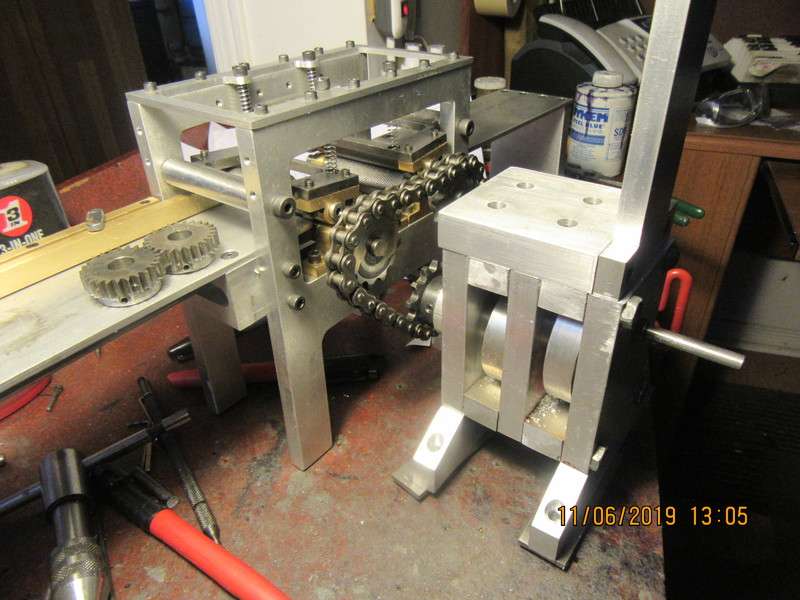
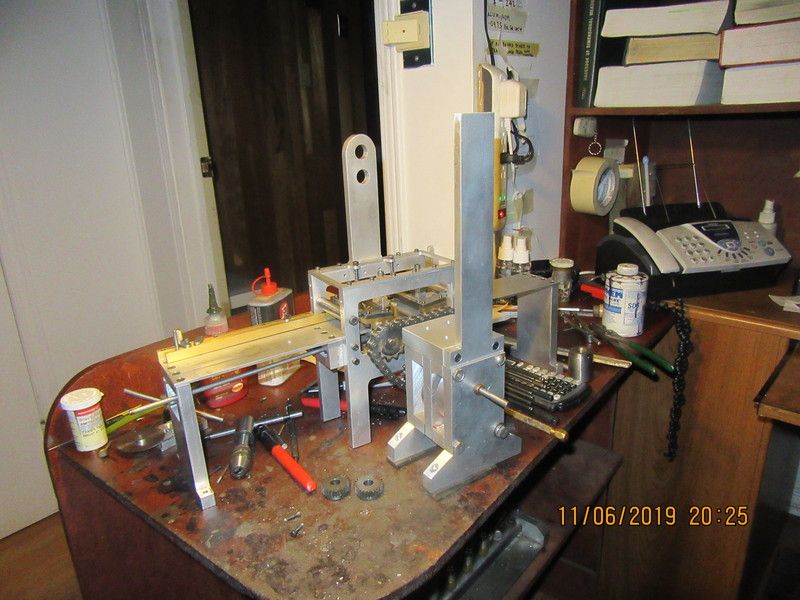

![DreamPlan Home Design and Landscaping Software Free for Windows [PC Download]](https://m.media-amazon.com/images/I/51kvZH2dVLL._SL500_.jpg)



















































![MeshMagic 3D Free 3D Modeling Software [Download]](https://m.media-amazon.com/images/I/B1U+p8ewjGS._SL500_.png)

